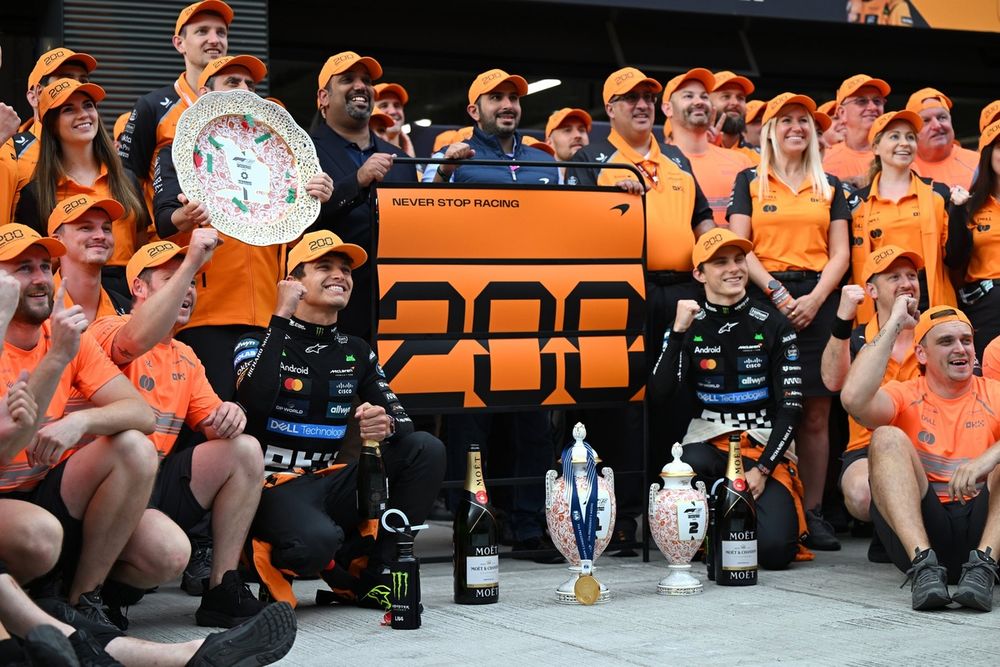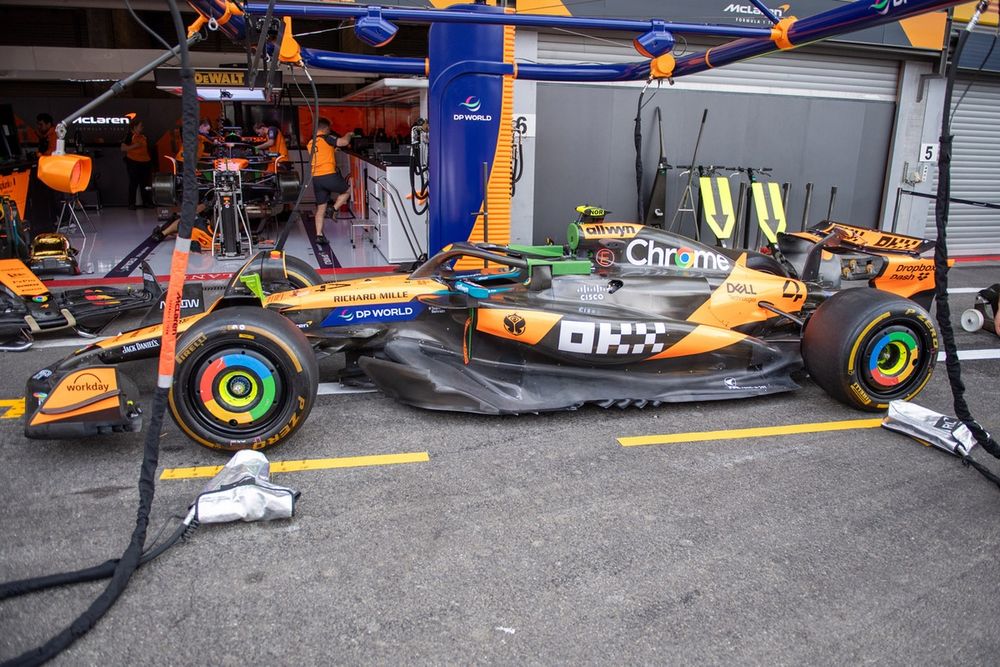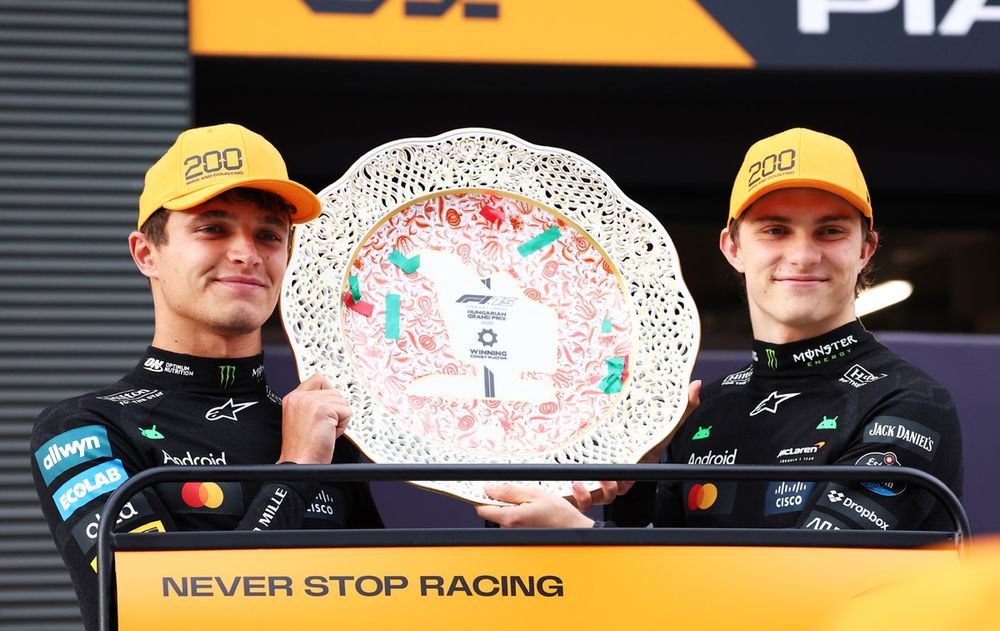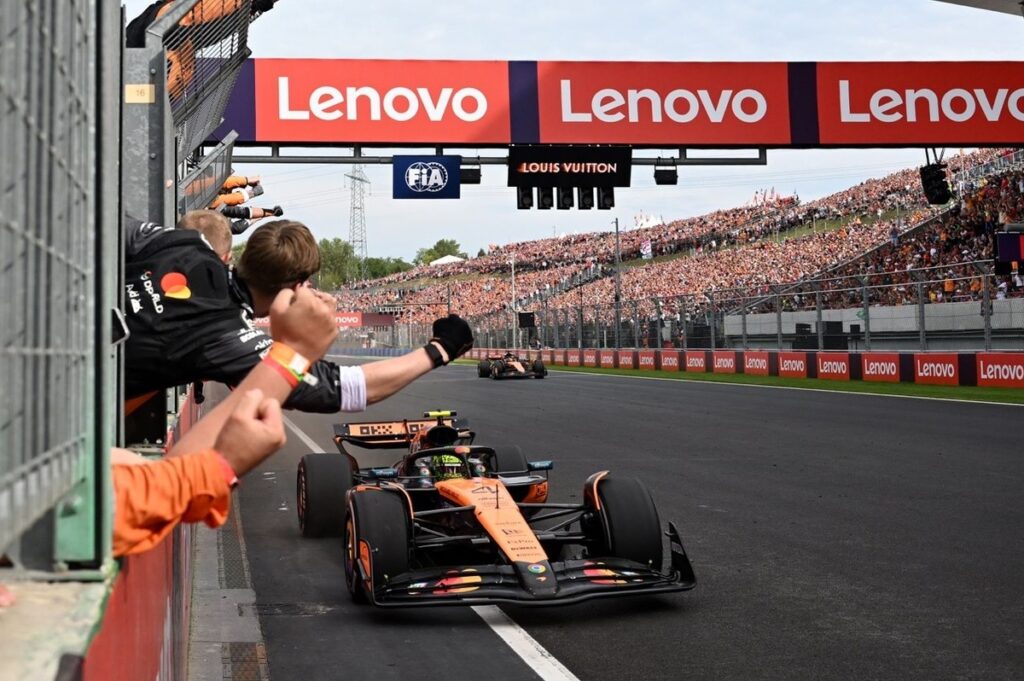If McLaren had to sprint until the final hurdle of the 2024 season to fend off Ferrari’s prancing horse for the team’s first constructors’ crown since 1998, then it is heading towards a second title at a canter this year.
Its 11 wins in 14 is almost double the victories claimed last year, and with no interlopers this time, Lando Norris and Oscar Piastri will decide amongst themselves who will succeed Lewis Hamilton as McLaren’s latest world champion.
Naturally, the sprouts of its overwhelming success were sown years ago. Carefully cultivated by team boss Andrea Stella and CEO Zak Brown as they wondered why the McLaren Technology Centre’s fertile soil wasn’t yielding the results that its vast engineering talent warranted.
It involved a mixture of unleashing the full potential of some of the brightest minds already at the team, like aero guru Peter Prodromou whose contract was extended early this year, and bolstering those ranks with outside hires like revered Red Bull designer Rob Marshall.
The trajectory of its 2025 challenger – the MCL39 – has been a long-term one as well. The prospect of 2025 being the last season of the current regulations cycle, set against the backdrop of the demanding 2026’s rules revolution, was reason to take stock and decide whether 2025 ought to be year of evolution or revolution.
For many teams further down the grid the answer was simple, deciding 2026 offers a prime opportunity to get back in the game. But as the 2024 title battle raged against Red Bull and Ferrari, Stella and his squad soon realised that playing it safe was not going to be an option for them if McLaren wanted to stay on top.
Lando Norris, McLaren MCL38
Photo by: Glenn Dunbar / Motorsport Images
The successor to the title-winning MCL38 was going to be bold and ambitious.
“At some stage during the 2024 season, we thought that in 2025 we really needed to take a step forward, because we had seen that the top four teams were very, very close to one another, which means that there was a lot of variability in the outcome of a race weekend,” Stella explained as he sat down with Autosport at the Hungarian Grand Prix.
“That also meant that if you do a little extra effort and you can clear this group, then you may actually compete for very important results on a pretty regular basis.”
Embracing engineering risks
An additional strategic benefit was front loading its development before the 2 January start date of 2026 aero work, which meant that it would be easier to focus attention on the new rules if its risky design approach paid off.
“At the same time, we thought, if we are in a good position in 2025 with a strong car, we can release the pressure a bit on ’25 and focus more on ’26,” Stella said.
“Based on these we decided to go for quite a lot of innovation on the 2025 car, the MCL39, which we have innovated in ways that require quite a bit of courage and commitment, because in some areas we were leaning on the edge of what was our engineering knowledge.”

Lando Norris took McLaren’s 200th grand prix win in Hungary, with Oscar Piastri securing the team’s seventh 1-2 victory of 2025.
Photo by: Sam Bagnall / Sutton Images via Getty Images
That did require the utmost faith in the Woking engineers that McLaren wouldn’t bite off more than it could chew, with Stella admitting the design department came up with the type of solutions – which it is keeping close to its chest but prompted plenty of speculation – that “we have never done before”.
“The team is currently in a position where we can take this sort of engineering risk, and then we will learn along the way,” he explains his approach. “You commit to that risk and you trust that you will develop the right engineering, the right processes to actually deliver on some solutions that, for instance, may look good aerodynamically, but actually implementing them on the car may be something that we have never done before.
“With this objective in mind, we have innovated pretty much every single area and gained efficiency. And I think results we see on track is the result of this is one extra reason for the entire team to be proud of what we have achieved.”
“We just wanted to go for the fundamentals”
By cleverly packaging its MCL39, the design team gave the aero department a bigger playground to operate in. The result was a much more aerodynamically efficient car, an area which the team had historically been struggling with, while being much kinder on its tyres over a race stint – especially in the heat.
Some of that innovation came at a small cost, as it made the car’s front end more numb in qualifying, which particularly impacted Norris over the first third of the season but has since been largely mitigated.
The launch car was then upgraded further with floor and wing elements that further squeezed more downforce out of the car for a given drag level. The bottom line is that the McLaren is still nearly unbeatable on certain circuits with long, medium-speed corners, but has now morphed to an all-rounder capable of winning pretty much anywhere, whereas as the Red Bull, Ferrari and Mercedes all have their strengths but also very pronounced weaknesses.

McLaren MCL39 technical detail
Photo by: Circuitpics.de
It explained why McLaren was initially so dominant on tracks like Bahrain and Miami but faced fiercer competition from Verstappen and Red Bull through the high-speed twists of Suzuka and Imola, and Montreal was George Russell’s hunting ground in the Mercedes. But the team has raised its baseline performance level to a degree where it is only ever second or third best at most.
However, Stella insists crafting an all-round car, with a bigger emphasis on usable performance than peak downforce, was not a deliberate choice but rather the by-product of good engineering.
“We didn’t really think about like: ‘Oh, we want the car to be multi-purpose and good at every single circuit’,” he said.
“We just wanted to go for the fundamentals in terms of cooling efficiency, generating as much as downforce as possible in an efficient way, trying to have a good interaction with the tyres. And this kind of seems to pay off, also in terms of versatility and being very consistent car in multiple conditions.
“At the same time, when we go into the details, we will see that if we take corners like at the high-speed level of Silverstone, we don’t have the best car. Red Bull and Ferrari may be better than us. Or if we go to a low-speed circuit with kerbing, like in Canada, we were not the best car. So, there are some areas of the range where we are not the quickest.
“But I think overall, having invested in the fundamentals, we seem to have created a pretty robust package.”

Lando Norris and Oscar Piastri
Photo by: Clive Rose / Formula 1 via Getty Images
Stella insisted McLaren wouldn’t be the dominant team after every race after the summer break, with circuits like Las Vegas still a question mark after being soundly beaten there by Mercedes last year. But the squad’s robust consistency ensures it won’t be caught in the championship, with any hopes of the contrary evaporating around the Spanish Grand Prix, when a new technical directive on the controversial flexing front wings proved not to make a big difference – as the team had warned its rivals about before.
A floor upgrade in Spa then further showed McLaren isn’t taking its lofty position for granted, and more efficient rear wings should also help it at Vegas and other low-downforce circuits.
For neutrals, the silver lining of McLaren’s supremacy is that it puts the team in a position to let Norris and Piastri fight for the championship without major interference, which will be a boon for F1 fans starved of a genuine title challenge since the notorious 2021 campaign.
The technical groundwork has been laid in Woking, now it is up to its two drivers to put their rocketship to good use, while Stella and Brown will hope they can keep the squad’s sense of harmony intact.
In this article
Be the first to know and subscribe for real-time news email updates on these topics
Read the full article here

